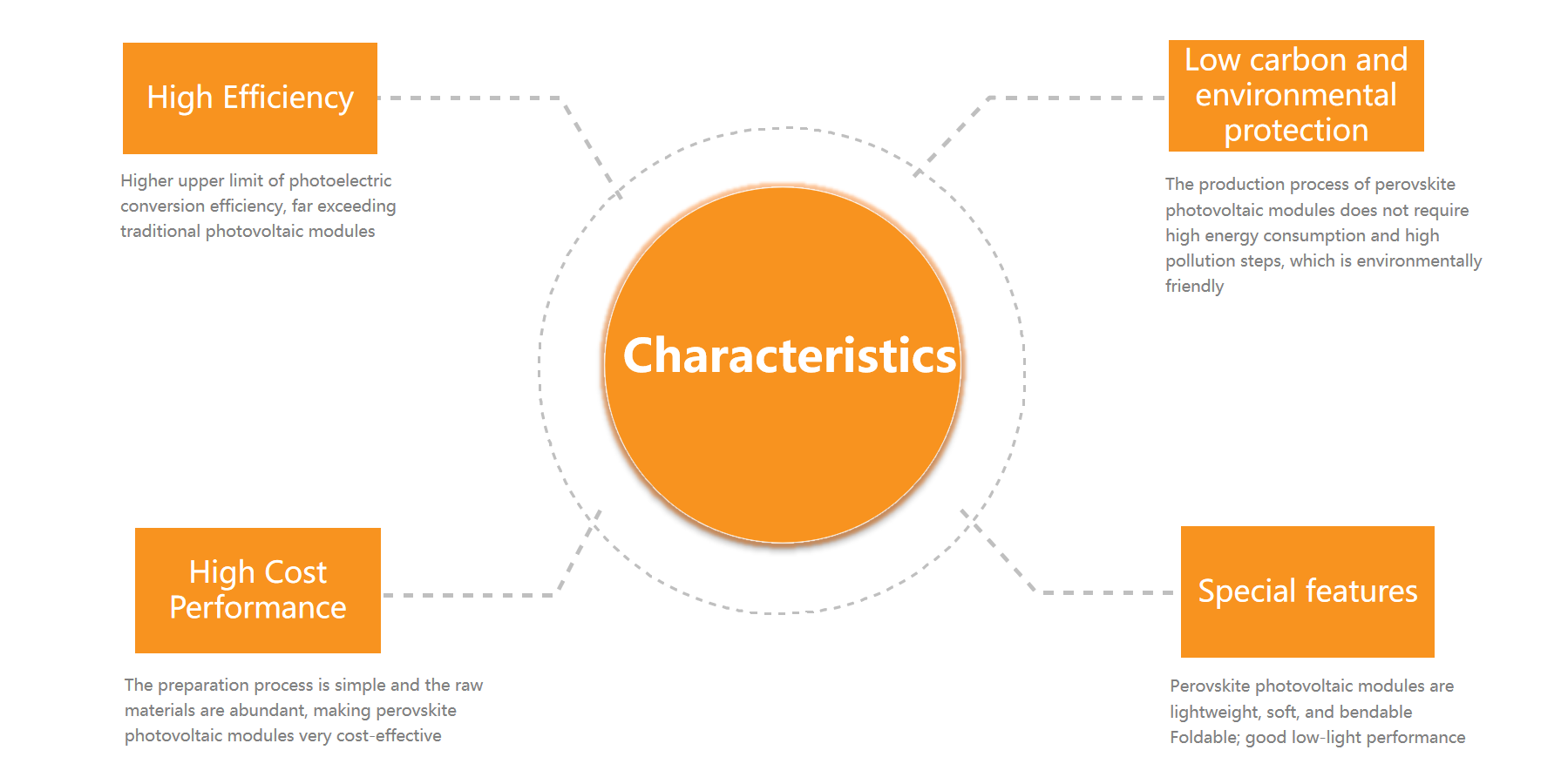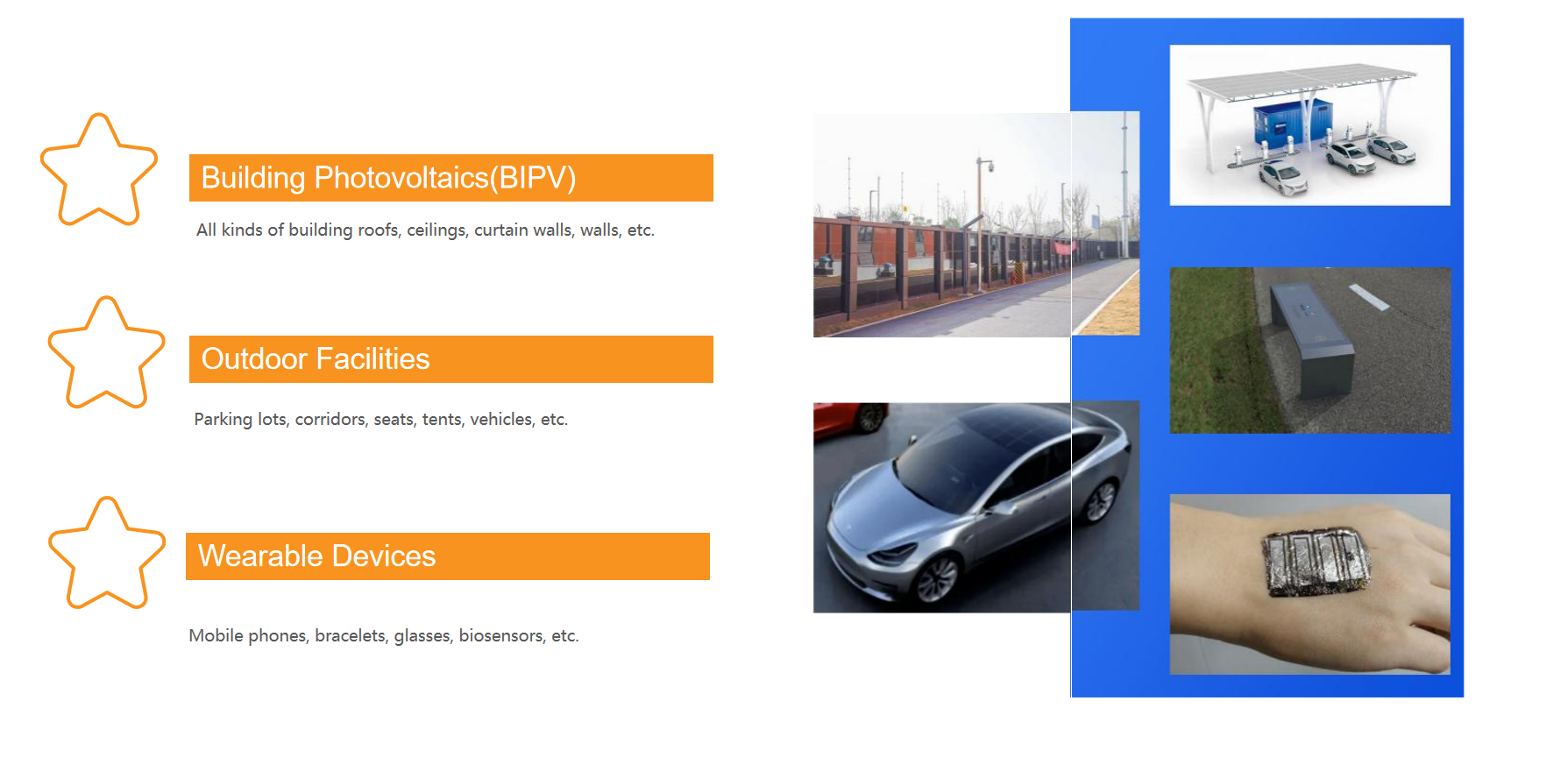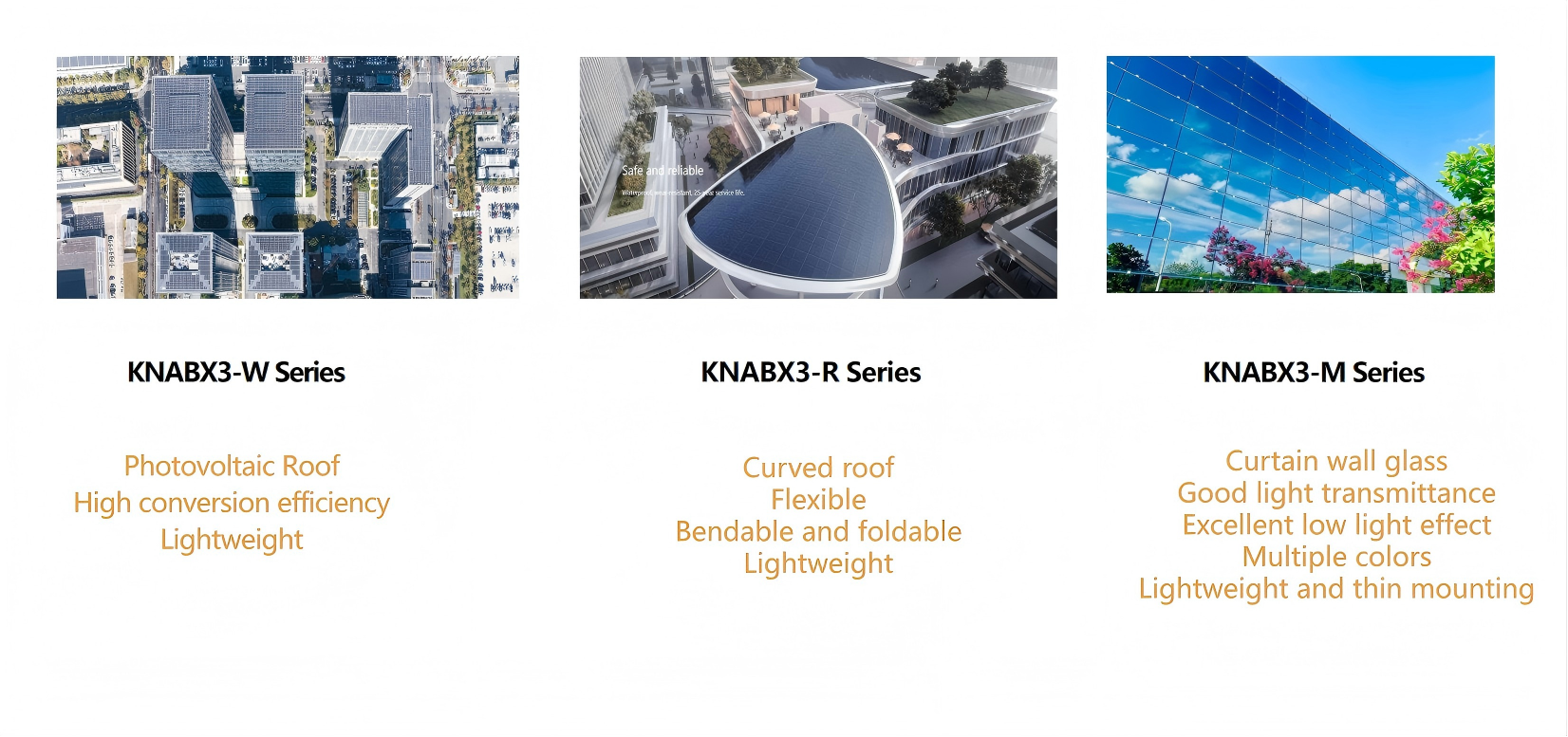Perovskite Photovoltaic (PV) Modules represent the most promising and rapidly advancing technology in the solar energy sector, poised to potentially complement or even surpass traditional silicon solar panels in the future.
The first 100MW-class flexible perovskite battery pilot line in Zhejiang Province was established, and large-area flexible perovskite photovoltaic modules were applied to vehicle-mounted products and demonstration operations for the first time.
Item NO.:
GE-DZ01Payment:
TTProduct Origin:
ChinaColor:
Blue, PurplePerovskite Photovoltaic Modules Characteristics

Perovskite Photovoltaic Modules Features
High Efficiency
Perovskite solar cells have achieved lab efficiencies exceeding 25% for single-junction cells and over 33% in tandem configurations. This rivals or surpasses traditional silicon panels (~22% efficiency for commercial modules).Their strong light absorption allows ultra-thin (~500 nm) active layers, reducing material usage.
Flexibility and Lightweight Design
Unlike rigid silicon panels, perovskite solar panels can be fabricated on flexible substrates (e.g., plastic or metal foil), enabling applications in curved surfaces, wearable devices, or portable chargers.
Semi-Transparency and Aesthetic Appeal
Perovskites can be tuned to transmit specific wavelengths, creating semi-transparent panels ideal for building-integrated photovoltaics (BIPV), such as solar windows or facades.
Advantages Over Traditonal Solar Panels
Faster ROI: Lower production costs and high efficiency could reduce payback periods.
Versatility: Can be integrated into diverse surfaces (e.g., vehicles, backpacks, skyscrapers).
Tandem Technology: Stacking perovskite cells atop silicon boosts efficiency by harvesting more of the solar spectrum.
Application Scenarios


Hot Tags :